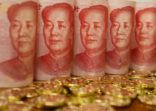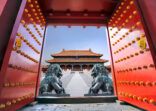Blackrock has announced that it is removing the “synthetic ETF” designation from its flagship iShares FTSE A50 China Index ETF, as the fund has reached 70% physical replication.
The firm has also added a renminbi counter to the ETF’s listing on the Hong Kong stock exchange.
Physical-replication ETFs use securities to track an index, while synthetic ETFs use derivatives such as participatory notes issued by offshore banks. The P-notes provide indirect exposure to equities listed in markets to which access is restricted.
Blackrock, the largest global ETF provider with $1.4trn of AUM, announced the gradual transition of the Hong Kong-domiciled FTSE A50 China Index ETF from synthetic to physical replication in October 2016. The company intends to further increase the degree of the fund’s physical replication, a spokesperson for Blackrock told FSA.
The change reflects the increasing ease with which China index fund managers can access China’s domestic market through channels such as the Renminbi Qualified Foreign Institutional Investor (RQFII) scheme and Stock Connect.
Blackrock launched the FTSE A50 ETF in 2004 using synthetic replication out of necessity, as China A-shares were not accessible to foreign fund managers. As access to them opened up, and the firm was granted RQFII quota, it decided to convert the fund to physical replication, which is its preferred way of managing index products.
Equity ETFs based on synthetic replication tend to carry higher cost, stemming from collateral fees paid to banks issuing the derivatives. They are also more complex to operate and tend to have higher tracking error compared to physical ones.
Of the 127 ETFs listed on the Hong Kong exchange, 25 were classified as synthetic on 30 June.
The iShares FTSE A50 China Index ETF held HK$29.7bn ($3.8bn) of AUM on 30 June, according to HKEX data, and was the largest China ETF listed in Hong Kong.
The fund uses mostly the firm’s RQFII quota to access the A-share market, according to the firm’s spokesperson. As the fund’s positions are large, the company finds the RQFII channel “easier” for the purpose than Stock Connect.
















